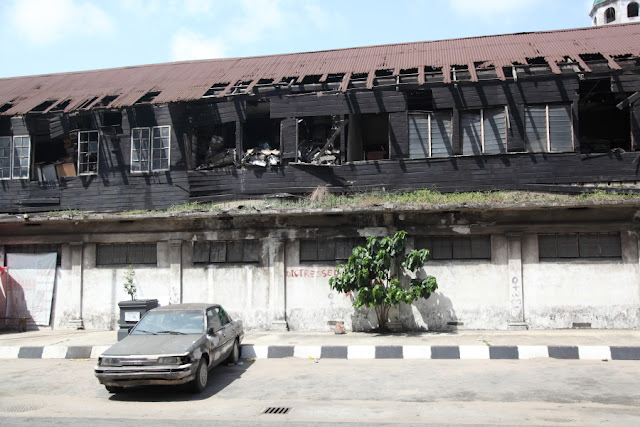 |
| coming back from playing soccer |
After the busy visit of Balogun market on a week day, one wonders if Lagos Island can ever be a peaceful place. Well yes, on Sundays the streets are quiet, left to church goers, youth playing football on the asphalt or taking a walk, some food sellers offering to fill the stomachs of people with appetite for a large portion of amala, of rice or pounded yam. Only local residents are to be seen on a Sunday morning.
 |
| Central Bank and Tinubu square |
Shops are closed, the traders filling up the island are not to be seen. It is the right time to take a walk to enjoy the streets largely empty of vehicles.
The financial district is built next to Marina, with the impressive building of the central bank next to Tinubu Square which has a park with water animations closed to the ordinary people.
Time also to see a few colonial buildings that constitute most of the history of Lagos, where the British established their administration with Lord Lugard. The first hospital, the old prison (Freedom Park) next to what is now part of the archives of the state of Lagos. Worryingly the archive building is in very bad shape. Some part of the roof and the walls are demolished, revealing piles of documents abandoned heat and humidity.
 |
| archives in distress |
One side of the prison, which is today an event center, is gathering sellers of coffins, proximity was everything!
 |
| colonial style superseded |




Comments
Post a Comment